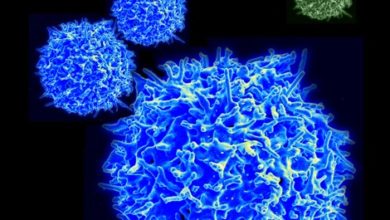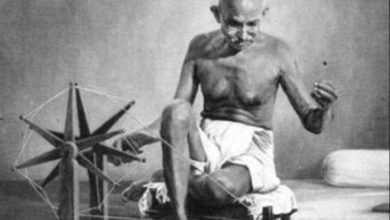Natural Home Remedies for Your Health Problems Remedies Easily Available in your Surrounding

Garlic
We all use generous amounts of garlic in our food and take it as a supplement to good health. Of course we all know that garlic reduces blood pressure and is good for the heart, but is that all? Are there any other benefits of using garlic and essentially how does it really work? Here is an overview on how effective garlic is.
History of Garlic:
Garlic has been used medicinally in one form or another for at least 4000 years. The English name for Garlic originates back to Anglo-Saxon times, being derived from gar (a spear) and lac (a plant). This is a reference to the shape of the plant`s leaves, which are long, flat and thin.
However, the earliest known usage of Garlic dates back to the time of Pliny, in the first century.
Garlic has also been mentioned in Old English writings from the tenth to the fifteenth century. Chaucer, for example, refers to Garlic as Poor Mans Treacle meaning an elixir ordure-all.

Garlic the natural antibiotic
Today we use antibiotics to treat various infections and it is of course easier to buy the pills over the counter for our purpose. But antibiotics were developed only in 1928. So how did humans deal with infections before that? Yes it was garlic the universal medicine that was used in the treatment of Bronchitis, Tuberculosis, Dysentery and other general illnesses like colds, flu and ear, nose and throat infections.
In this context, it is noteworthy to mention that during World War I, Garlic was used to dress the wounds of soldiers, with amazing results. It saved many lives by stopping infections in the wounds turning to blood poisoning.
How does Garlic work:
When sliced, cooked or chewed, chemical reactions with the air converts the chemical ‘alliin’ to ‘allicin’ which is what gives garlic its wonderful taste and aroma. Further chemical reactions convert the ‘allicin’ to other bioactive substances. These compounds have NAC (N-acetylcysteine), which is a powerful antioxidant, and immune stimulant that increases glutathione production.
Uses of Garlic:
1) Heart: – Garlic intake reduces cholesterol by restraining the activity of HMG-COA, an enzyme involved with cholesterol production. Recent studies also show that garlic reduces the formation and size of nanoplaques (tiny cholesterol deposits).
Since garlic is a blood thinner, it reduces blood pressure.
2) Liver: Excessive consumption of alcohol or medications damages the liver as they interfere with the organs production of glutathione. Garlic being rich in sulfur is essential in making glutathione.
3) Infections: Since Garlic stimulates the immune system, regular use of Garlic and garlic supplements help prevent colds.
4) Ointment: Garlic has also shown to have antibacterial, anti-fungal, and anti-parasitic properties when applied to skin.
Summing it up:
Here is a list of the various diseases that can be treated with Garlic and Garlic supplements:
- Coughs, colds and other infections of the lungs and throat.
- Reducing and expelling catarrh.
- Asthma
- Fevers
- Healing of wounds, boils, sores etc
- Fungal infections
- Ear & Sinus infections
- Expelling intestinal parasites
- Reducing blood sugar levels
- Digestive infections, gastric upsets
- Lowering blood cholesterol levels
- Lowering blood pressure
- Keeping the blood thin.
A Word of Caution:
In conclusion it is necessary to add that there are no general contraindications for Garlic. However, some people may be sensitive to it, or find that for some reason it does not suit them.
For example, it may produce indigestion or loose bowels, so, if you are starting, take it with caution at first.
Also rubbing raw garlic cloves or oil to skin may cause blistering.
It is also suggested that a medical herbalist should be consulted for the use of Garlic supplements to children under 12 years.
But since such cases are rare, it is a good idea to include Garlic as much as you can in your diet.

Radish
Radish is a famous vegetable and is produced every where in India. Radish is produced specially in winter season but in some areas it is available in every season. It is of many kinds, mainly white, small white, red and round etc. Japanese radish is about two feet long with a sphere of about three inches. It is used in preparing many eatables. It is used both in crude shape and in cooked shape as well.
Radish is very tasty specially with salt. Taking crude or uncooked radish with meal works as appetiser. It increases relish and liking for food. It contains anti fever properties and is useful in fever and breathing problems. It is also useful in diseases of nose, throat and eyes. Every part of radish is useful and helpful in curing different diseases in different ways. Its seeds are used in curing the stone disease while its leaves are beneficial and used in curing diseases like urine problem. Stone, acidity and swelling etc. Radish is useful in case of piles and helps curing diseases like cough and gastric trouble, old constipation and hiccup etc. In case of acidity it is useful if taken with sugar (shakkar). Taking radish juice mixed with lemon juice relieves stomach-ache and also useful in gas problem developed after taking food. Juice of leaves of radish is used in case of swelling. Radish increases metabolism of the body and assists in increasing appetite.
However radish should not be taken empty stomach.
Radish contains protein, carbohydrate, calcium, phosphorus and iron. It also contains vitamin A, C, potassium and copper in minute quantity.
Disclaimer:
The views expressed above are solely of the writer. The writer has derived the content from various articles, books and personal experience over the years of general practice.

Honey
From ancient time in India honey is considered to be an excellent food. By its proper use a person can make himself free from ailments, strong and long living. Honey is produced by honey bees. Honey bees suck the sweet juice from different flowers and store same in their body. Then they fill that juice in small cells of the beehive. In the beginning the juice of flowers is thin like water but after having been stored in the bodies of honey-bees it becomes thick and sweet. In this way honey is an abstract of juice of different flowers, vegetables and life of honey bees. Honey bees make their bee-hives in houses, on trees, in hill areas and any other place. In one beehive there are about ten thousand to fifty thousand honey bees.
Honey is greasy, transparent, brown, heavy, very sweet and a natural effluent easily soluble in water. Honey is not only a medicine but also sweet and complete nutritious food as milk. Honey bees use honey as their food and the remaining honey is found and got by the human being.
According to Ayurveda, honey is of eight types and their names have been given on the basis of different names of honey bees.
1- Honey produced by big bees of yellow colour.
This type of honey is excellent light and is useful for eyes and diseases like jaundice, piles, asthma and tuberculosis etc.
2- Honey produced by large black bees (Bhonra)
This type of honey is good transparent and is useful to cause coldness in urine, good for digestion, effluent, more greasy and cold in nautre.
3- Honey produced by small pingla (reddish yellow) bees
This honey is reddish yellow in colour and is useful in case of jaundice, piles, asthma etc but specially useful in case of diabetes.
4- Honey produced by very little black (like mosquito) bee
This type of honey is like purified butter in colour, withering, hot in nature. Therefore, it causes acidity, burning and gas. It is useful in case of diabetes.
5- Honey produced by bees named Pingla Verta (of yellow colour)
These bees produce honey in the jungles of Himalaya. This honey is yellow, greasy, heavy and cold in nature. It is of very good qualities and is useful in many diseases like worms, acidity, diabetes, poison etc.
6- Honey produced by yellow bees like large black bees and having sharp mouth.
This honey is astringent and bitter and is used for gaining health and strength. This is also useful for eyes and helps curing disease like cough, acidity etc.
7- Honey produced by reddish yellow worms living in holes like snake holes.
This honey is astringent, sour, hot in nature and cuases acidity. It increases liking and improves voice. It is useful in case of leprosy and poison. This is available very rarely and only to fortunate people.
8- Juice of flowers fallen from flowers and accumulated on leaves is also a kind of honey and is called Dal Madhu or Dal Honey. It is sour, astringent and light. This honey is useful for increasing metabolism of the body and relieving cough. It is withering and increases relish and liking. It is also nutritious, heavy and useful in case of diabetes.
The properties of Honey are different according to different honey bees producing it. In comparision the honey collected from Himalayas is considered to be the best. Honey collected from cold areas full of trees and flowers and collected in winter and spring season is also considered excellent.
Honey increases red cells in the blood. It gives heat and strength to the body. Sourness of Honey is useful in case of breathing, cough, hiccup and diseases related to respiratory system. As Honey contains Vitamin B in good quantity it helps curing skin diseases. Mixed with different herbs honey is used in curing different diseases.
Honey is very useful for children, weak persons and some other patients. Daily use of Honey strengthens the heart. Diabetic patients can also use when necessary. Use of honey and lemon juice in water causes loss of fats and weight. Honey should neither be heated, nor mixed or taken with hot things. Honey and purified butter together in equal quantity should never be taken as it becomes poison. When necessary honey should be taken more than ghee < purified butter > in cough diseases. In other diseases related to acid and gas, the ghee should be taken more than honey. Use of old honey in medicines is considered to be good.
- Use of 1 teaspoonful of honey in 1 cup of milk in the morning gives strength.
- Taking 1 teaspoonful of honey mixed with one teaspoonful of ginger juice in the morning and evening gives relief in cold and increases metabolism of the body.
- Use of 1 teaspoonful of honey three to four times a day is useful in the case of cough.
- Use of honey with fresh butter is useful for T.B. patients
- Taking 2 teaspoonful of honey mixed properly with 1 teaspoonful of Lemon Juice in the morning and evening is very useful in the case of high blood pressure.
- Taking honey with cold water daily in the morning is very useful in the case of skin diseases.
- Its use with water is also very useful in case of constipation.
- Honey contains 87% of Glucose which is easily and immidiatey dissolved in blood and digested.
Disclaimer:
The views expressed above are solely of the writer. The writer has derived the content from various articles, books and personal experience over the years of general practice.

Ginger
Taking pieces of ginger with little salt on it before meals works as an appetiser, liking for food is developed and food is digested. It purifies the tongue and throat and diseases of cough and gas do not develop.
Ginger is generally produced in all parts of India but specially produced in warm regions having sand soil with moisture. It is largely produced in Khera district of Gujarat. Ginger from Dholka area of Gujarat is famous. Dried ginger is called ‘Sonth’ ( dry ginger).
Properties of ginger and ‘Sonth’ (dry ginger) are almost the same. Persons of every age can fearlessly use it. People make its pickle and jam etc and also ‘Avaleh’ an Ayurvedic perparation.
Ginger is specially beneficial in rainy and winter season. Its use is beneficial in loose motions, gas and cough disease and for persons having heart problems. Diseases like cough and asthama are cured by using ginger juice with honey. Ginger juice with onion-juice is useful in case of vomitting.
Inspite of beneficial and useful properties of ginger precautions should be taken by persons suffering from blood pressure, jaundice, fever, dry cough, acidity and leprosy etc.
Disclaimer:
The views expressed above are solely of the writer. The writer has derived the content from various articles, books and personal experience over the years of general practice.

Potato
There is hardly any other vegetable which is used as much as potato throughout the world. As such some people call potato as king of vegetables.
Original country of potato is South America. It is said that from South America it reach India via Europe. Potato can be produced in all types of soil. In India potato is largely produced in the areas of Nilgiri, Poona, Mahabaleshwar etc. It is also produced in good quantity in the coastal areas of rivers in Gujarat. Production of potato is also increasing in Surat district and the areas of rivers Saraswati, Banas, Sabarmati etc. in Gujarat.
Potatoes are of many kinds e.g., red, white, small, big etc. Potatoes of redish colour and big size from Mahabaleshwar side are considered to be very energetic. It can be used and is generally used with many other vegetables, Mixed herbage of Onion-potato or potato-brinjal are considered to be very tasty. Pieces and chips of potatos are used in many other preparations. It is considered to be vegetarian and is commonly used in days of fasting. It is used by all types of people, poor or rich. All types of potatoes are heavy to digest. It increases cough and gas problems but is energetic for hard working people and drinkers.
Use of potato is not beneficial to persons of weak digestion, suffering from gas trouble, diabetes, and to some other patients also. It should be used carefully and less by persons suffering from poor digestion, scabies, diarrhoea, eczema, itching, skin disease, rheumatism, fever, piles, indigestion etc. Potato contains protein, carbohydrates, phosphorus, potassium, sulpher, copper and iron in small or large quantity. It also contains Vitamin ‘A’ and ‘C’ in small quantity.
Disclaimer:
The views expressed above are solely of the writer. The writer has derived the content from various articles, books and personal experience over the years of general practice.




